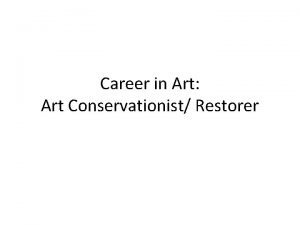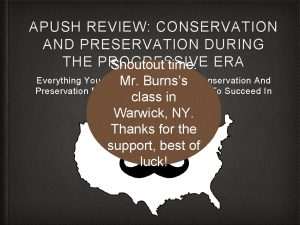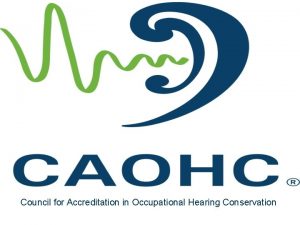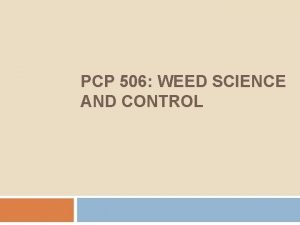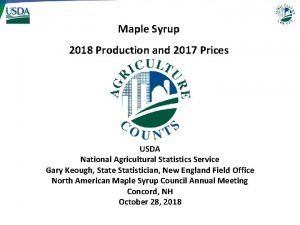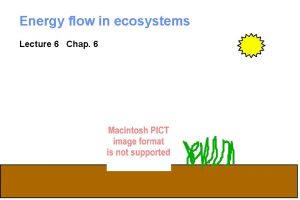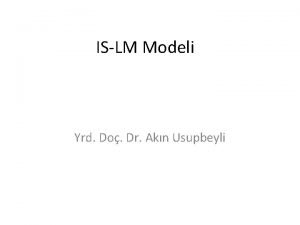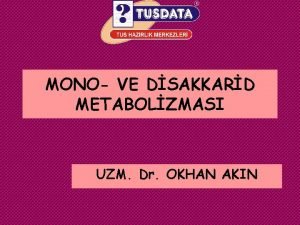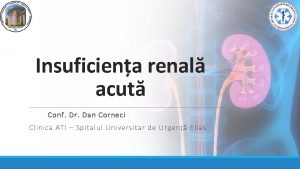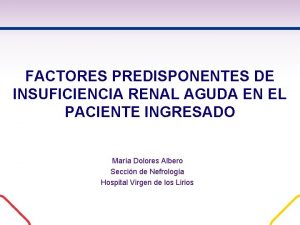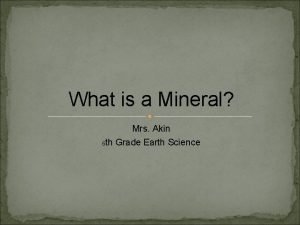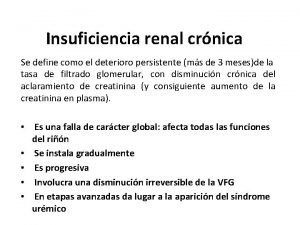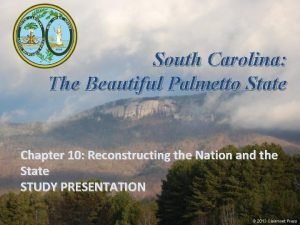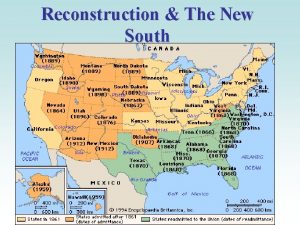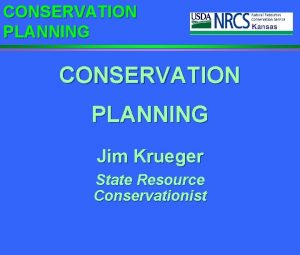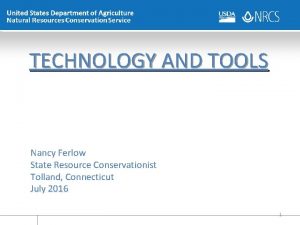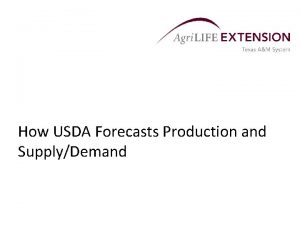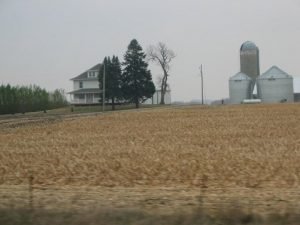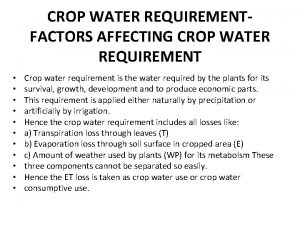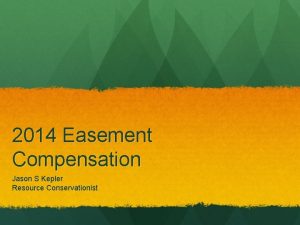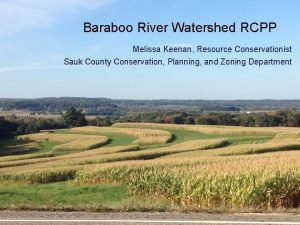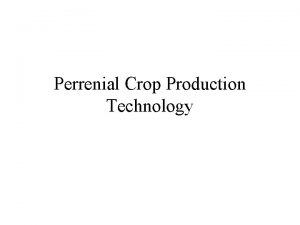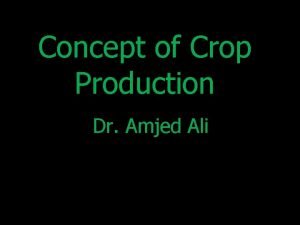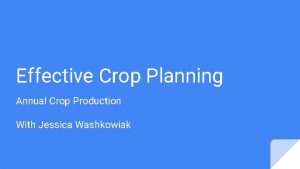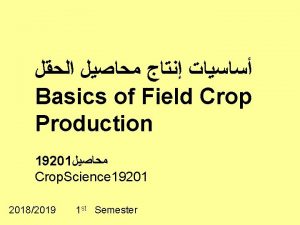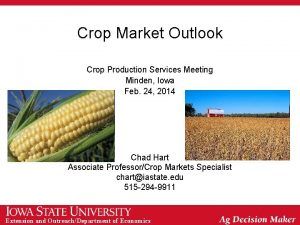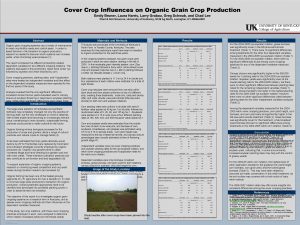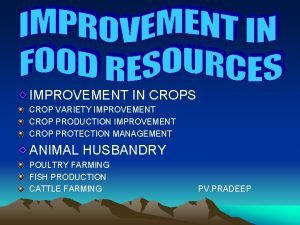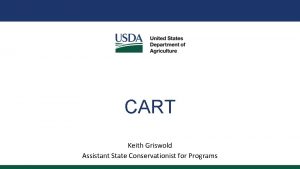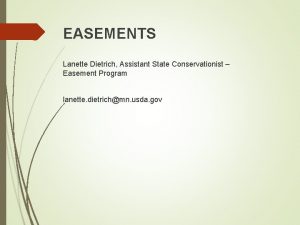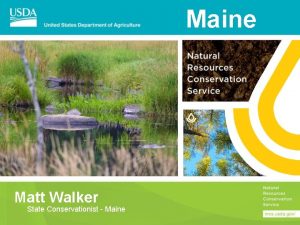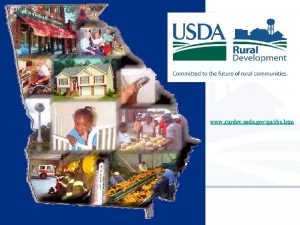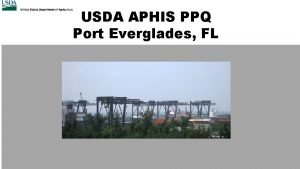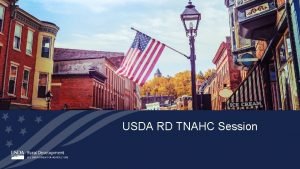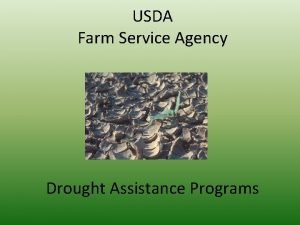Crop Production Tom Akin State Resource Conservationist USDA





























- Slides: 29

Crop Production Tom Akin, State Resource Conservationist USDA NRCS, Amherst, MA Thomas. akin@ma. usda. gov


Agronomist/Conservationist “The agronomist is more or less a middleman between the man of pure science and the man on the farm. He must be scientific enough to understand the principles evolved by the pathologist, the biologist, and the chemist, and practical enough to apply these principles in the business of Farming. ” William M. Jardine, Secretary of Agriculture, 1917

Resource Concerns

Resource Concerns �Too much Runoff / Too little Infiltration �Soil Erosion • Sheet/Rill & Gully �Soil Quality • Organic Matter depletion/Compaction �Water Quality • Sediment/Nutrients/Pesticides

Tillage Systems Tillage = Disturbance � Conventional—less than 15% residue cover. � Reduced—between 15 and 30% residue cover. � Conservation tillage—more than 30% of crop residue. • No-till - No plow, disk, etc. EVER. Aim for 100% ground cover. • Strip/Zone-Till - Narrow strips are tilled where seeds will be planted, leaving the soil in between the rows untilled • Rotational Tillage - Tilling the soil every two years or less often (every other year, or every third year, etc. ).

Primary Tillage � Generally deeper and more thorough � Inversion of topsoil � Mixing of soil � Aeration and oxidation � Burial of crop residues � Tends to produce a rough surface finish

Primary Tillage � Moldboard plow

Primary Tillage � Subsoilers

Secondary Tillage � Lower level of disturbance � Shallow or surface � May only be disturbing a specific location � Seedbed preparation � Results in a smoother surface (in general) � Planting

Secondary Tillage � Field Cultivators

Water management � Irrigation (sprinkler, drip) � Drainage � Runoff control

Weeds, Insects, Diseases �Oh my… �Pesticides? �Cultural control? • • Physical barriers (e. g. , Ree-May) Cultivation Crop rotation Trap crops?

Conservation Practices? � 324—Deep Tillage � 328—Conservation Crop Rotation � 329—Residue & Tillage Mgmt, No-Till � 330—Contour Farming � 332—Contour Buffer Strips � 340—Cover Crop � 345—Residue & Tillage Mgmt, Reduced Till � 484—Mulching � 512—Forage & Biomass Planting

Soil Health � Capacity of the soil to function as a living system that sustains plant, animal, and human health.

Path to Healthier Soil �Keep the soil covered; �Keep a living root in the soil at all times; �Minimize tillage/disturbance; �Increase soil organic matter; �Increase soil biological diversity; �Increase plant diversity; rotations AND cover crops! �Bare soil is the enemy!


Soil Aggregate Stability Indicator of Soil Health

Cover Crops Benefits � Food and habitat for soil microorganisms; � Soluble carbon pumped into the soil from cover crop root systems; • Best food for bacteria and fungi;

http: //www. sare. org/

Red Clover—Seeded Early Spring Cornell University Organic Cropping Systems Project

Buckwheat—Planted Early June

Hairy Vetch and Low Rate of Winter Rye Cornell University Organic Cropping Systems Project

C: N Ratios Terminated In Late May Terminated In Late April

Maturing Winter Rye C: N = 100: 1 Cornell University Organic Cropping Systems Project

Nitrogen Immobilization in Winter Squash AFTER MATURE RYE AFTER CLOVER Cornell University Organic Cropping Systems Project

http: //www. sare. org/


Re-Cap �What crops? �Grown how? �What are the resource concerns? �Which conservation practices?
 Yang merupakan pengertian production adalah
Yang merupakan pengertian production adalah How much does an art restorer make
How much does an art restorer make Preservationist vs conservationist apush
Preservationist vs conservationist apush Certified occupational hearing conservationist
Certified occupational hearing conservationist Weed eradication definition
Weed eradication definition Usda linc training and resource library
Usda linc training and resource library Usda maple syrup production
Usda maple syrup production Difference between standing crop and standing state
Difference between standing crop and standing state Akim camara violinista
Akim camara violinista Akın usupbeyli
Akın usupbeyli Hatice mergen
Hatice mergen Doç dr gülden akın
Doç dr gülden akın Savaşçı 20
Savaşçı 20 Galaktokinaz
Galaktokinaz Stadializare brc
Stadializare brc Criterios rifle
Criterios rifle Akin clasificacion
Akin clasificacion Akin minerals
Akin minerals Kriteria akin
Kriteria akin Oliguria poliuria anuria
Oliguria poliuria anuria Osman nuri bakırcı ortaokulu
Osman nuri bakırcı ortaokulu Akın usupbeyli
Akın usupbeyli Go 910
Go 910 What does tom symbolize in the devil and tom walker
What does tom symbolize in the devil and tom walker Resource leveling is the approach to even out the peaks of
Resource leveling is the approach to even out the peaks of Perbedaan antara resource loading dan resource levelling
Perbedaan antara resource loading dan resource levelling Crop lien system
Crop lien system Crop lien system
Crop lien system Crop lien system
Crop lien system Jute crop meaning in urdu
Jute crop meaning in urdu

